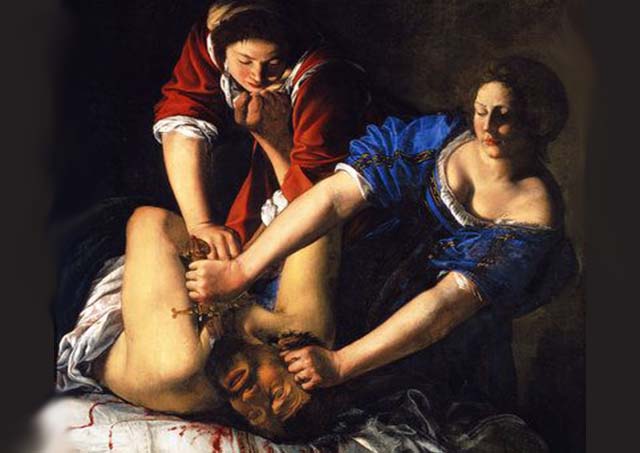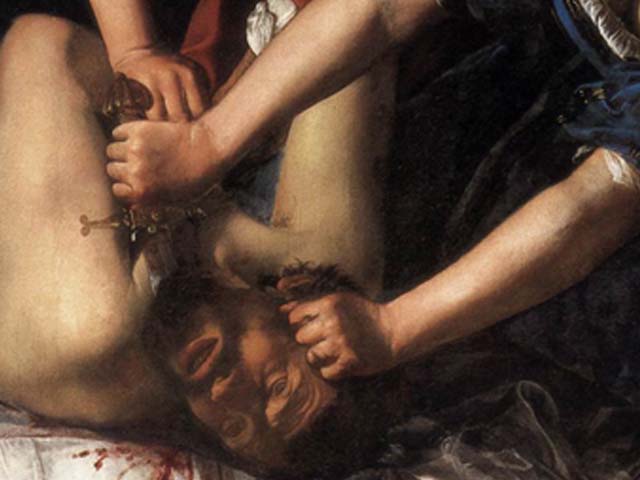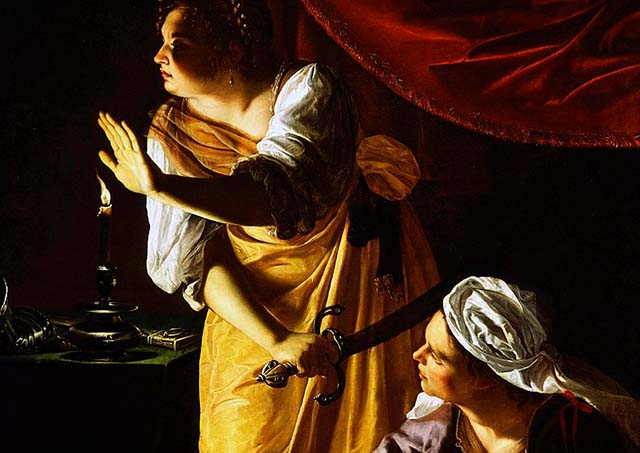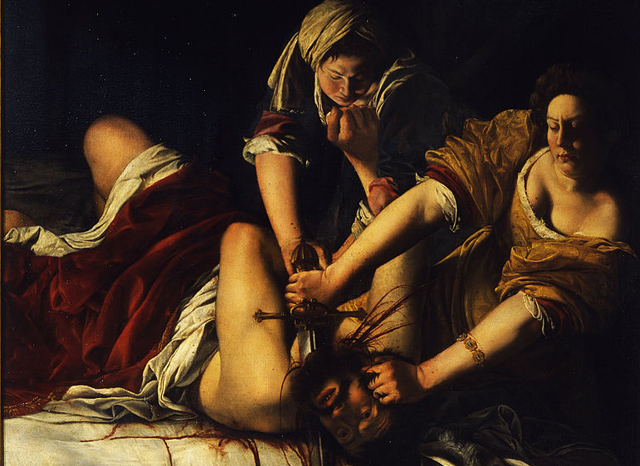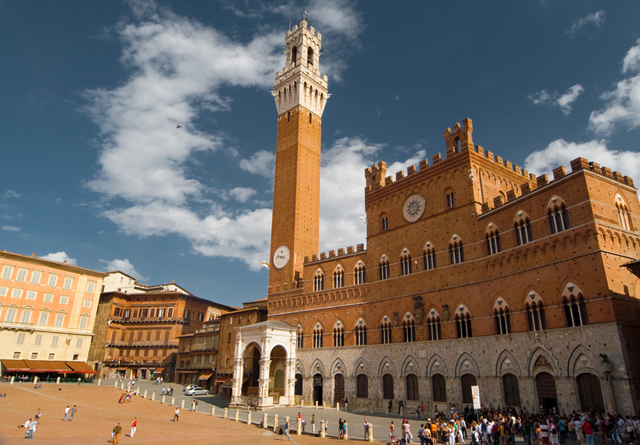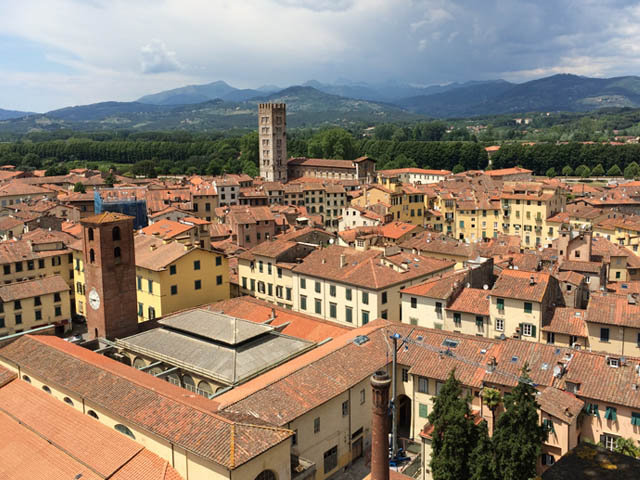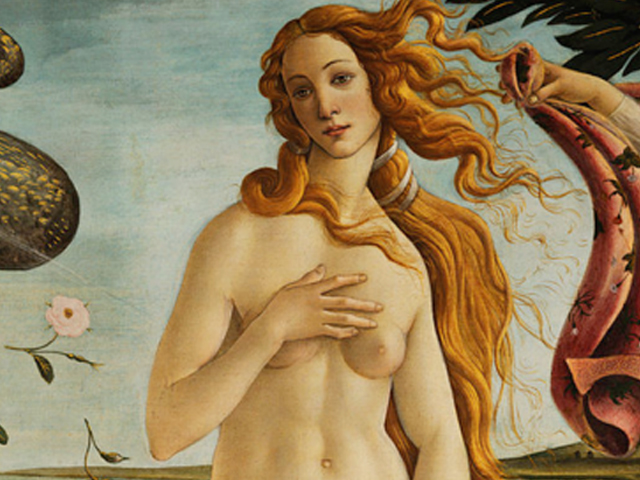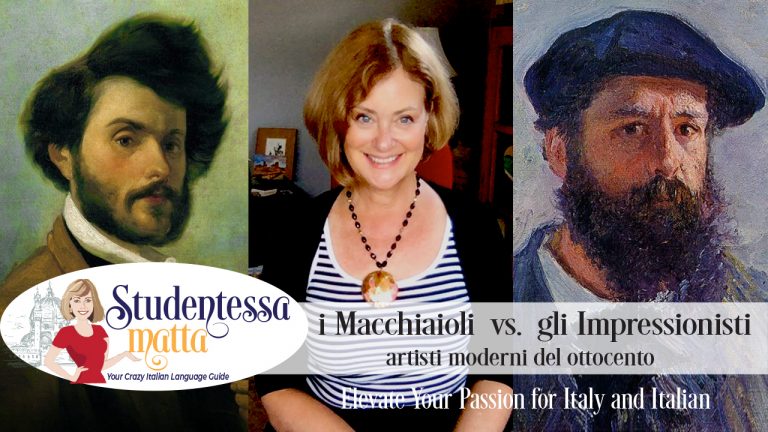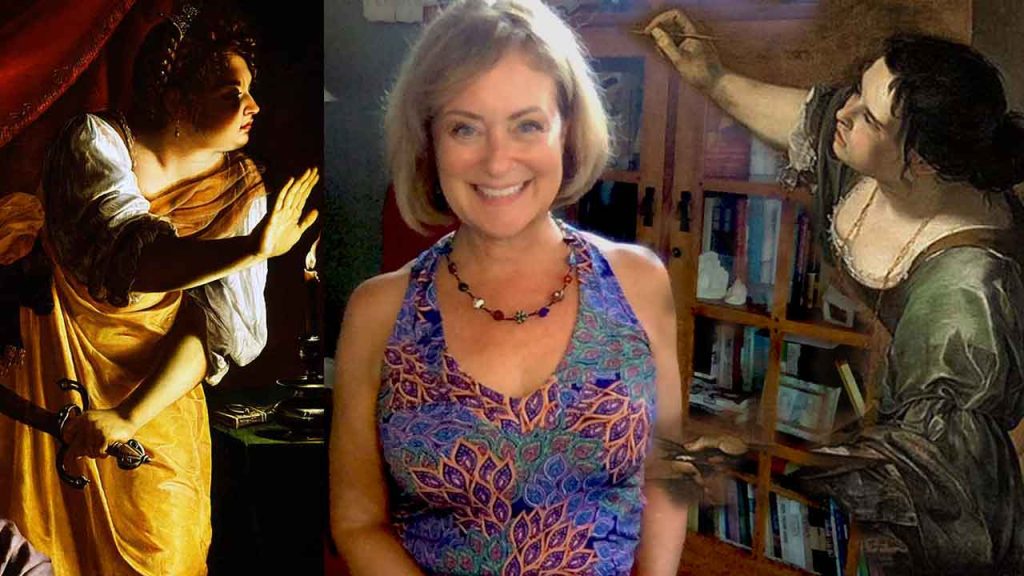
Una Caravaggista Unica!
The One and Only “Caravaggista”
Artemisia Gentileschi: Un talento unico in un mondo maschile
Artemisia Gentileschi: Breaking Boundaries in a Male-Dominated World
Vorrei parlarvi di uno di questi pittori, che non è un uomo, ma una donna. Dicono che c’erano tanti “Caravaggisti” ma solo una “Caravaggista.” Si chiama — Artemisia Gentileschi.
I would like to tell you about one of these painters, who is not a man, but a woman. They say that there were many “Caravaggisti” but only one “Caravaggista.” Her name is – Artemisia Gentileschi.
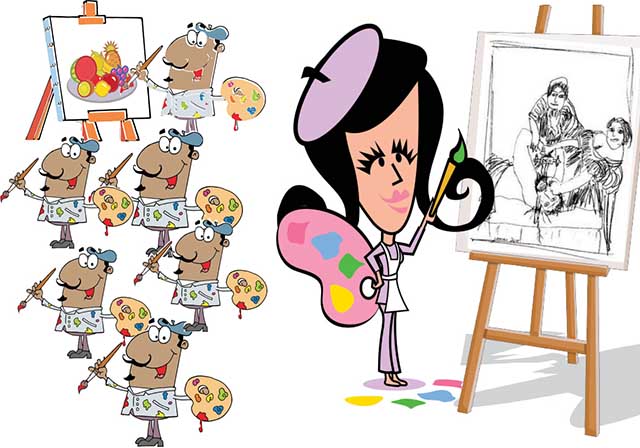
Artemisia Gentileschi: Un Talento Pionieristico all’Ombra di Caravaggio
Artemisia Gentileschi: A Trailblazing Talent in Caravaggio’s Shadow
Nel seicento, in una professione dominata dagli uomini, Artemisia Gentileschi si è distinta. È nata a Roma nel Mille cinque cento novantatré, (1593) e nella sua epoca e ancora oggi è uno dei pittori più talentuosi della generazione successiva di Caravaggio.
In the seventeenth century, in a male-dominated profession, Artemisia Gentileschi stood out. She was born in Rome in (1593) and in her time and still today she is one of the most talented painters of the next generation of Caravaggio.
Il chiaroscuro, cio’e’ l’effetto di luce teatrale con ombre e luci estreme di Artemisia, è molto caratteristico dello stile di Caravaggio. Poiché il padre di lei—Orazio Gentileschi ha preso ispirazione da Caravaggio visto che erano amici e si conoscevano bene, lo stile di Artemisia è stato anche fortemente influenzato da Caravaggio.
The chiaroscuro, that is, Artemisia’s theatrical light effect with extreme shadows and lights, is very characteristic of Caravaggio’s style. Since her father — Orazio Gentileschi took inspiration from Caravaggio as they were friends and knew each other well, Artemisia’s style was also heavily influenced by Caravaggio.
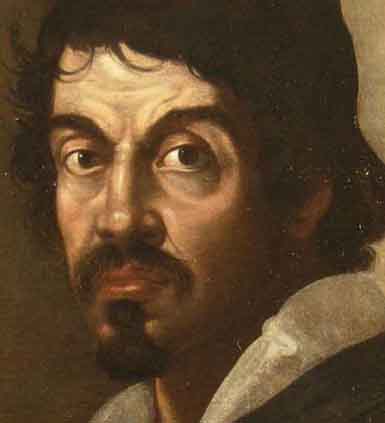
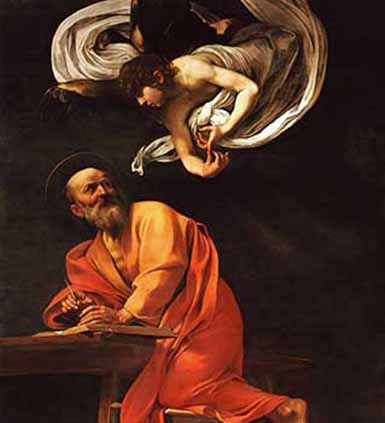
Nel XVII secolo, Caravaggio era un pioniere della sua epoca. Ogni uomo
aspirava a dipingere come lui, ma una donna straordinaria ci riuscì.
In the 17th century, Caravaggio was a trailblazer of his era. Every man
aspired to paint like him—yet one extraordinary woman succeeded.
Caravaggio, nonostante ai suoi tempi fosse visto come una figura controversa—sia per il suo stile ma anche per la sua vita personale— attualmente è considerato un’artista che ha elevato l’arte della pittura e che ha influenzato una generazione di pittori.
Caravaggio, although in his day he was seen as a controversial figure – both for his style but also for his personal life – is currently considered an artist who elevated the art of painting and who influenced a generation of painters.
La Matta Parla di Artemisia Gentileschi
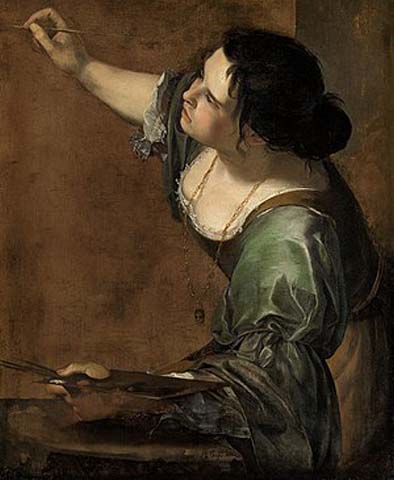
Un’arte ispirata alla forza femminile
Celebrating Strong Female Characters in Art
A differenza della maggior parte delle artiste del suo tempo, che si concentravano su nature morte e ritratti, Artemisia infranse gli schemi dipingendo audacemente soggetti tratti dalla storia, dalla Bibbia e dalla mitologia. Raffigurò personaggi forti e dinamici con l’intensità e il dramma tipici degli artisti uomini della sua epoca, distinguendosi come un’innovatrice senza paura. Con il tempo, il suo lavoro non solo superò quello di suo padre, ma la consacrò come una pittrice originale e rivoluzionaria.
Unlike most female artists of her time, who focused on still lifes and portraits, Artemisia broke the mold by boldly painting subjects from history, the Bible, and mythology. She portrayed strong, dynamic characters with the intensity and drama typical of the male artists of her era, setting herself apart as a fearless innovator. Over time, her work not only surpassed that of her father but also distinguished her as an original and groundbreaking painter in her own right.
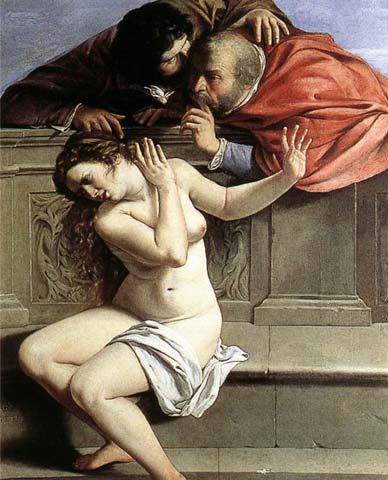
Come Caravaggio, Artemisia amava la pittura e visse incubo
Like Caravaggio, Artemisia, passionate about painting lived a nightmare.
In giovane età, Artemisia subì una devastante aggressione da parte del suo istruttore di pittura, Agostino Tassi. In un’azione senza precedenti per l’epoca, suo padre insistette affinché partecipasse a un processo altamente pubblicizzato, che durò sette lunghi e difficili mesi. Agostino Tassi, un artista talentuoso e favorito dal papa, fu accusato in un’epoca in cui le donne raramente, se non mai, portavano i loro aggressori in tribunale. Il caso affascinò e scandalizzò Roma, attirando un’attenzione diffusa. Durante il processo, Artemisia subì torture fisiche per dimostrare la veridicità della sua testimonianza, dimostrando coraggio e resilienza di fronte a difficoltà inimmaginabili.
At a young age, Artemisia suffered a devastating assault by her painting instructor, Agostino Tassi. In an unprecedented move for the time, her father insisted she take part in a highly publicized trial, which lasted seven grueling months. Agostino Tassi, a gifted artist and a favorite of the pope, faced accusations in an era when women rarely, if ever, challenged their attackers in court. The case captivated and scandalized Rome, drawing widespread attention. During the trial, Artemisia endured physical torture to prove her testimony was truthful, a testament to her courage and resilience amidst unimaginable hardship.
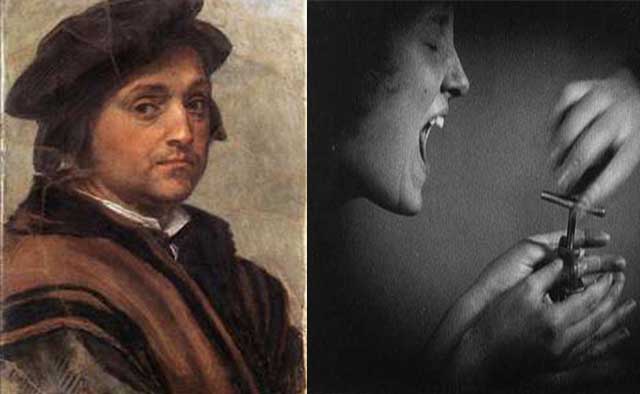
Alla fine, Artemisia vinse la sua battaglia legale contro Agostino Tassi. Tuttavia, a quel punto, la sua reputazione era stata compromessa e la sua vita e carriera come pittrice sembravano irrimediabilmente danneggiate. Fu etichettata come una “donna caduta”, considerata indesiderabile e indegna di matrimonio, con un futuro che sembrava destinato al convento. Fortunatamente, le fu trovato un marito, e grazie a questo matrimonio poté continuare a coltivare la sua passione per la pittura.
In the end, Artemisia ultimately won her court battle against Agostino Tassi. However, by then, her reputation had been tarnished, and her life and career as a painter seemed irreparably damaged. She was branded a “fallen woman,” considered undesirable and unworthy of marriage, with a future that seemed destined for a convent. Fortunately, a husband was arranged for her, and with the support of this union, she was able to continue pursuing her passion for painting.
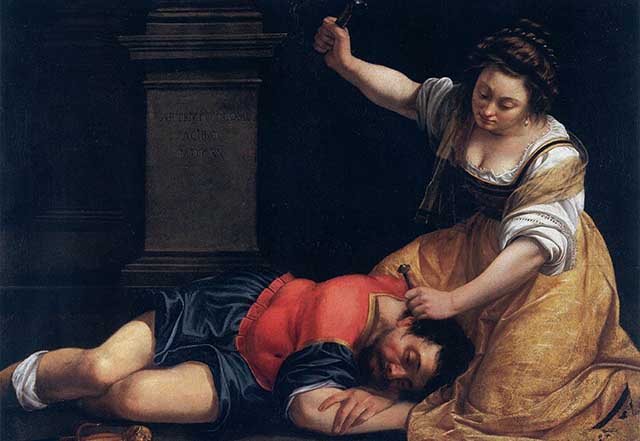
Una vita difficile, un’eredità senza tempo
A Challenging Life, a Timeless Legacy
Spinta dalle sue difficoltà personali, Artemisia canalizzò il suo talento artistico nel rappresentare figure femminili che avevano subito persecuzioni e ingiustizie. Scelse come soggetti eroine bibliche, come Susanna, Salomè, Santa Caterina e Betsabea, donne che avevano sofferto per mano degli uomini. Tuttavia, fu Giuditta, l’eroina coraggiosa che decapitò Oloferne, a portarle fama e riconoscimento. Creò diverse potenti versioni di questa scena, utilizzando famosamente il proprio volto per raffigurare Giuditta e quello di Agostino Tassi per rappresentare Oloferne.
Driven by her personal struggles, Artemisia channeled her artistic talents into portraying female figures who had endured persecution and injustice. She chose heroines from the Bible as her subjects, such as Susanna, Salome, Saint Catherine, and Bathsheba—women who had suffered at the hands of men. However, it was Judith, the fearless heroine who beheaded Holofernes, that ultimately brought Artemisia widespread acclaim. She created several powerful renditions of this scene, famously using her own face as Judith and depicting Holofernes with the features of Agostino Tassi.
Ma è la eroina Giuditta dalla Bibbia che
decapita Oloferne, che incarna la sua carriera.
But it is the heroine Judith from the Bible who
beheads Holofernes, who embodies her career.
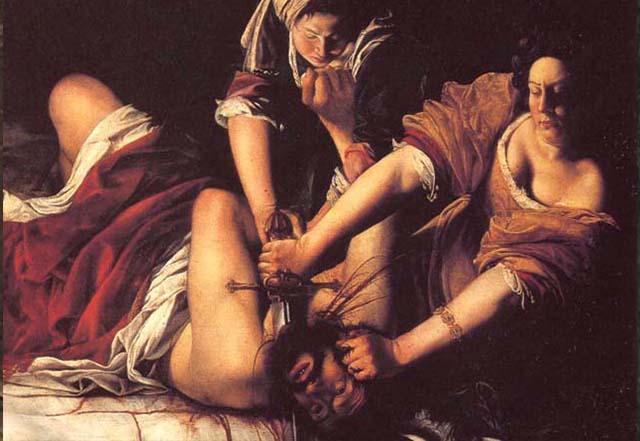
Artemisia ha scelto di dipingere la scena raccapricciante, in cui la vedova Giuditta taglia la testa del generale Assiro, per impedirgli di distruggere la sua città di Betulia. Lei ha dipinto questa scena non solo una volta, ma tante volte. Il quadro è terrificante nel suo realismo, come si può vedere dal coltello che taglia il collo del generale e dal sangue che sgorga.
Artemisia chose to paint the gruesome scene, in which the widow Judith cuts off the Assyrian general’s head, to prevent him from destroying his city of Betulia. She painted this scene not just once, but many times. The picture is terrifying in its realism, as can be seen from the knife that cuts the general’s neck and the gushing blood.
Sembra che Artemisia sia stata la prima arteterapeuta. Infatti, attraverso il suo lavoro artistico ha cercato di pulirsi dalla trauma che ha vissuto a Roma con Tassi. Guardate bene i viso di Giuditta… Artemisia ha usato la sua immagine e quello di Tassi, il suo stupratore, come Oloferne. Artemisia è la protagonista—è una donna che alla fine ha l’ultima vittoria sopra il suo aggressore.
Artemisia appears to have been the first art therapist. In fact, through her artistic work, she tried to cleanse herself of the trauma she experienced in Rome with Tassi. Take a good look at Judith’s face … Artemisia used her image and that of Tassi, her rapist, as Holofernes. Artemisia is the protagonist – she is a woman who in the end has the ultimate victory over her attacker.
Nel diciannovesima secolo femministi hanno portato in evidenza l’episodio di stupro, sostenendo che questo incidente ha alimentato lo spirito creativo di Artemisia, nel tentativo di vendicarsi e di ribellare contro una società dominata dagli uomini.
In the nineteenth century, feminists highlighted the rape episode, claiming that this incident fueled the creative spirit of Artemisia in an attempt to take revenge and rebel against a male-dominated society.
Forse… ma Artemisia era una donna forte e consapevole del suo mercato. Altri sostengono che Artemisia astutamente ha approfittato della sua fama dello stupro per soddisfare una nicchia di mercato maschile. Con quadri caricati di energia sessuale ha venduto più quadri.
Maybe … but Artemisia was a strong woman and aware of her market. Others argue that Artemisia cunningly took advantage of her rape fame to cater to a male market niche. With paintings charged with sexual energy, she has sold more paintings.
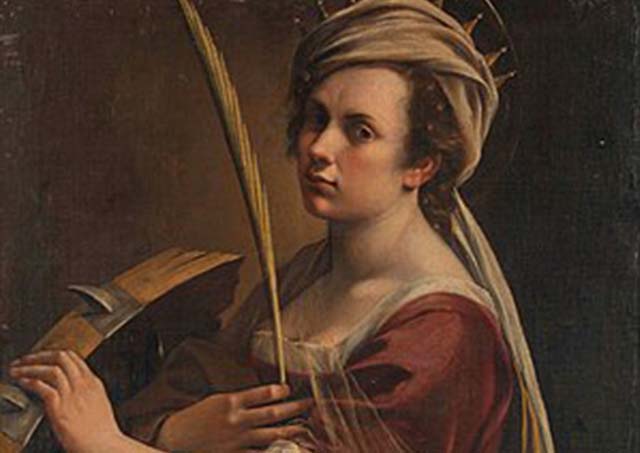
Anche se la sua gioventù era difficile a Firenze Artemisia è andata in avanti con la sua vita e con la sua carriera. Si è sposata con un pittore fiorentino. Ma non è stato un matrimonio felice. Lui era un donnaiolo e spesso ha rubato soldi che lei ha guadagnato per pagare non i conti della famiglia ma per bere e le sgualdrine… inoltre era geloso del talento della sua moglie.
Although her youth was difficult in Florence Artemisia went on with her life and career. She married a Florentine painter. But it wasn’t a happy marriage. He was a womanizer and often stole money she earned to pay not the family bills but for drinking and sluts … plus he was jealous of his wife’s talent.
Nonostante tutte queste difficoltà, a Firenze l’opera di Artemisia è stata notata da Cosimo de’ Medici il granduca di Toscana e anche dal nipote di Michelangelo, che le ha chiesto di dipingere un omaggio al suo zio per la casa di Michelangelo che lui ha restaurato. Artemisia era anche amica di Galileo Galilei.
Despite all these difficulties, in Florence, the work of Artemisia was noticed by Cosimo de ‘Medici the Grand Duke of Tuscany, and also by Michelangelo’s nephew, who asked her to paint a tribute to his uncle for the house of Michelangelo that he has restored. Artemisia was also a friend of Galileo Galilei.
In un momento della storia in cui le pittrici non erano facilmente accettate dai loro coetanei nella comunità artistica, Artemisia era la prima donna a diventare un membro della prestigiosa Accademia di Arte del Disegno di Firenze. Ha ottenuto questo onore su richiesta nientemeno che di Cosimo de’ Medici.
At a time in history when female painters were not easily accepted by their peers in the art community, Artemisia was the first woman to become a member of the prestigious Academy of Art of Drawing in Florence. She obtained this honor at the request from non-other than Cosimo de ‘Medici.
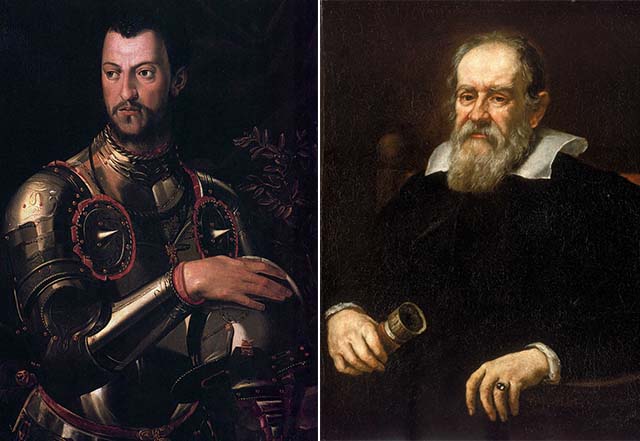
Scopri di più su Artemisia
Learn More About Artemisia
Quando ho iniziato a studiare l’arte barocca come studentessa universitaria, sono rimasta affascinata dalla storia di Artemisia e dal suo straordinario lavoro. È un’artista straordinaria, e la sua vita è altrettanto affascinante. Mi sono presto resa conto che c’era molto di più da scoprire su di lei: la sua personalità vivace, la sua incrollabile passione per la pittura e la sua determinazione a farsi conoscere come pittrice di fama. Nonostante le innumerevoli difficoltà, non ha mai rinunciato ai suoi sogni.
When I began studying Baroque art as an undergraduate, I was captivated by the story of Artemisia and her remarkable work. She is an extraordinary artist, and her life story is equally compelling. I quickly realized there was so much more to learn about her—her vibrant personality, her unwavering passion for painting, and her relentless ambition to establish herself as a renowned artist. Despite facing countless challenges, she never gave up on her dreams.
Per approfondire la vita di Artemisia, ho condotto ricerche approfondite e scritto un romanzo storico ispirato alla sua storia, intitolato Eternamente Artemisia. Se sei curioso di saperne di più su questa straordinaria artista, ti invito a scoprire il libro, disponibile su Amazon in formato cartaceo, ebook e audiolibro.
To delve deeper into Artemisia’s life, I conducted extensive research and wrote a historical novel inspired by her story, titled Eternally Artemisia. If you’re curious to learn more about this extraordinary artist, I invite you to explore the book, available on Amazon in print, ebook, and audiobook formats.
Read the novel that was inspired by Artemisia Gentileschi!
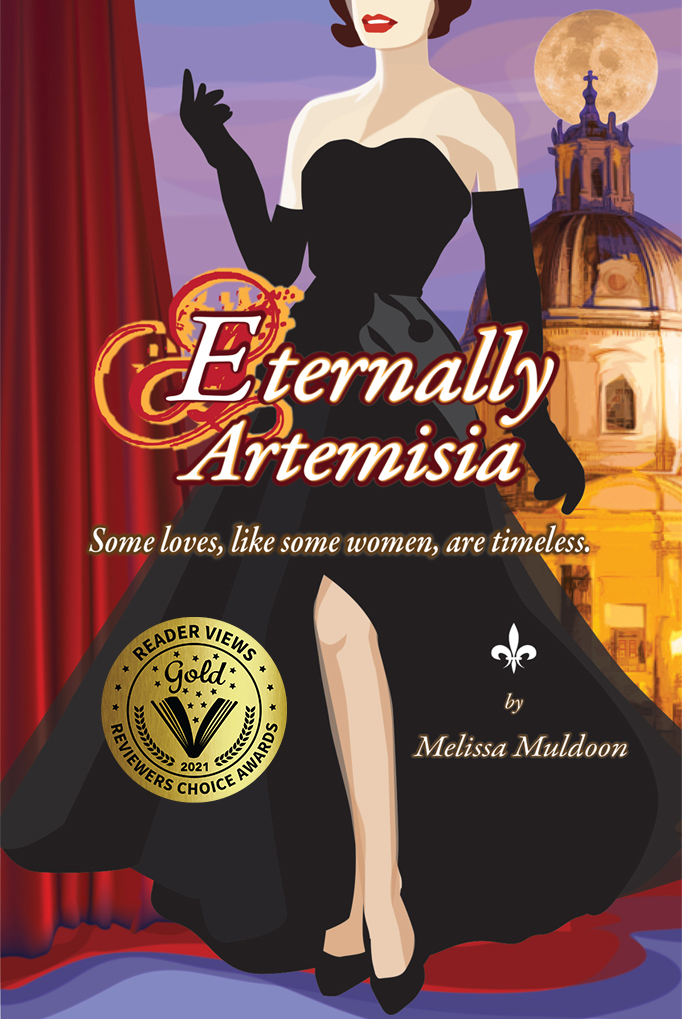
Eternally Artemisia
They say some loves travel through time and are fated to meet over and over again. For Maddie, an art therapist, who wrestles with the “peculiar feeling” she has lived previous lives and is being called to Italy by voices that have left imprints o her soul, this idea is intriguing. Despite her best efforts, however, proof of this has always eluded her. That is, until one illuminating summer in Italy when Maddie’s previous existences start to bleed through into her current reality. When she is introduced to the Crociani family—a noble clan with ties to the seventeenth-century Medici court that boasts of ancestors with colorful pasts—she finally meets the loves of her life. One is a romantic love, and another is a special kind of passion that only women share, strong amongst those who have suffered greatly yet have triumphed despite it. As Maddie’s relationship develops with Artemisia Gentileschi—an artist who in a time when it was unheard of to denounce a man for the crime of rape, did just that—Maddie discovers a kindred spirit and a role model, and just what women are capable of when united together. In a journey that arcs back to biblical days and moves forward in time, Maddie encounters artists, dukes, designers, and movie stars as well as baser and ignoble men. With Artemisia never far from her side, she proves that when we dare to take control of our lives and find the “thing” we are most passionate about, we are limitless and can touch the stars.
!
